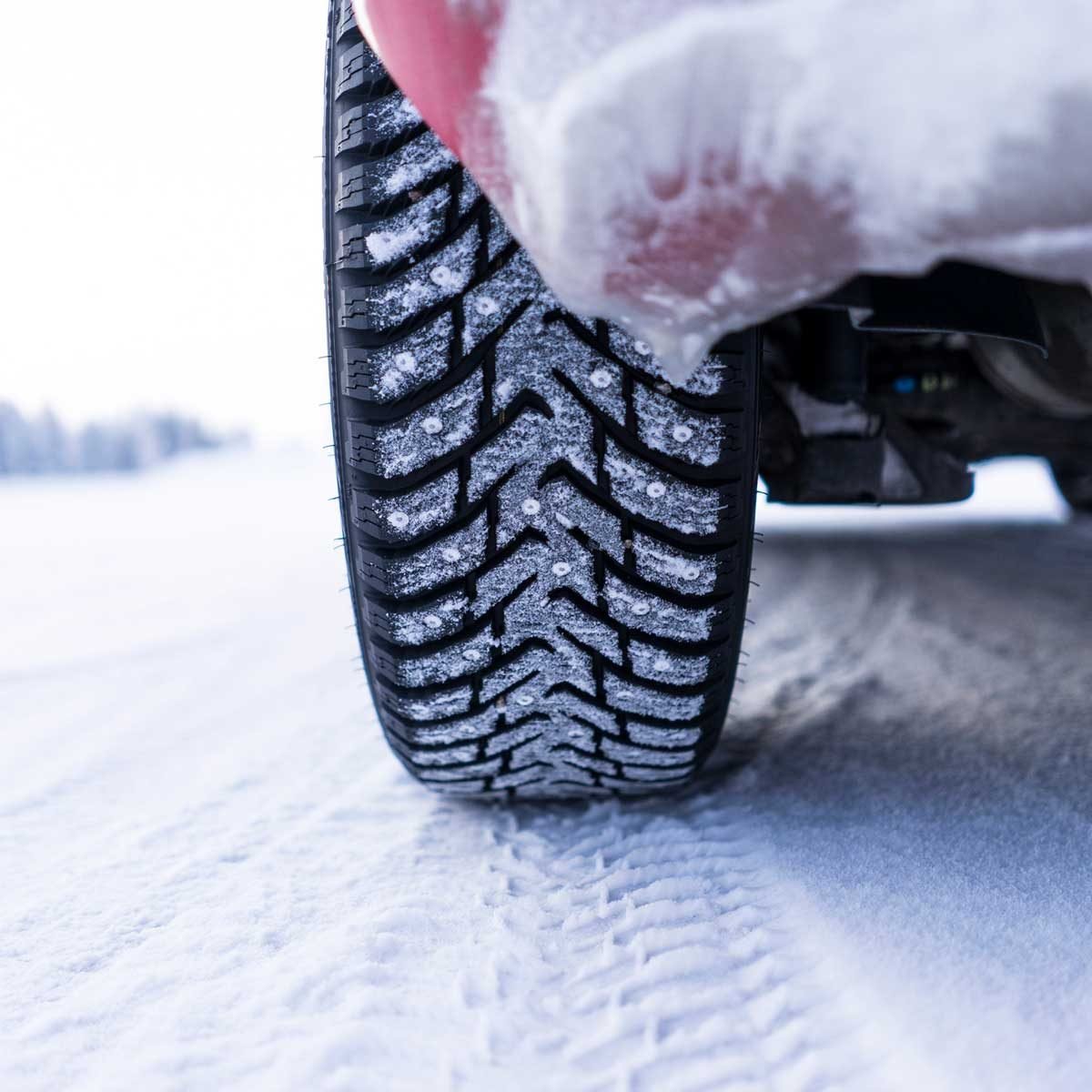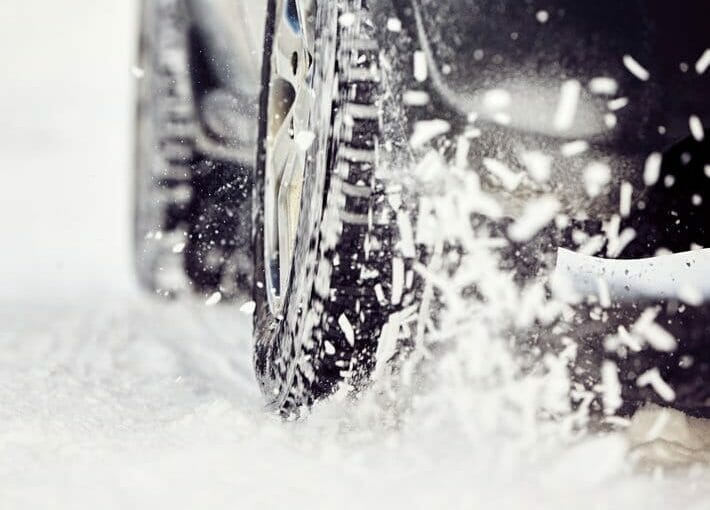How to Make Tires Grip Better in Snow
If you live in an area where it snows, you know how difficult it can be to get your car to grip the road. The good news is, there are a few things you can do to make your tires grip better in snow. First, make sure your tires are properly inflated.
Cold weather can cause tire pressure to drop, so check your tires’ pressure at least once a week during the winter months. Second, invest in a set of winter tires. Winter tires are designed with special tread patterns and compounds that help them grip icy and snowy roads better than regular all-season tires.
Finally, keep your car’s underbody clean. Snow and ice can build up on your car’s underbody and suspension components, which can create drag and reduce traction.
- Make sure your tires are inflated to the proper pressure
- Cold weather can cause tires to lose some air, which can impact their grip on the road
- Check the tread depth of your tires
- Tires with less tread will have less traction in snow and ice
- Consider using winter or all-season tires
- These tires are designed for better grip in colder temperatures and on slippery surfaces
- Drive slowly and carefully when conditions are icy or snowy
- Sudden starts and stops can cause your car to slip and slide on the road
Get a grip: the science of how tires work in winter
How Do I Keep My Tires from Spinning in the Snow?
If you live in an area where it snows frequently, you know the importance of having tires that won’t spin out on you when driving in winter weather. Here are some tips to keep your tires from spinning in the snow:1. Get a good set of winter tires.
All-season tires just don’t cut it in deep snow and icy conditions. Winter tires are made with a special rubber compound that stays flexible even in very cold temperatures, and they have deeper treads than all-season tires to provide better traction. If you can’t afford new winter tires, consider studded tires – they’ll give you extra grip on ice.
2. Keep your tire pressure at the proper level. In cold weather, tire pressure drops about 1 PSI (pounds per square inch) for every 10 degrees Fahrenheit decrease in temperature. That means if it’s 20 degrees outside and your tire pressure is supposed to be 30 PSI, it may only be 28 PSI – which can cause decreased traction and increased likelihood of spinning out.
Check your owner’s manual or door placard to find the recommended tire pressure for your vehicle, and check your tire pressure regularly during the winter months.3. Avoid sudden starts and stops. When driving on slippery roads, make sure to take turns slowly and avoid braking or accelerating too quickly – both can cause your wheels to spin out.
Instead of slamming on the brakes when approaching a stop sign or red light, gently let off the gas pedal and allow your car to coast until it comes to a stop. And when pulling away from a stop, start slowly so you don’t lose control of your car as you accelerate.4 .
Increase following distances . You should always leave plenty of space between your car and the one ahead of you when driving under normal conditions , but this is especially important in wintry weather . Sudden stops can cause spinning , so by increasing following distances , you ‘ ll have more time to react if someone ahead of y ou does need t o brake suddenly .
5 . Know how t o handle if y our c ar d oes start t o skid . If y our v ehicle d oes start slipping or sliding , remain calm an d avoid panicking or overcorrecting .
What Gives Winter Tires Improve Traction in Snow?
Most winter tires are made with a softer rubber compound than all-season tires. This gives them more flexibility and grip in cold temperatures. The treads on winter tires are also designed to stay open in snow so they can bite into the surface for traction.
Some have special siping (tiny slits) that help clear out snow and ice from the treads.
What Can I Put on My Tires for Better Traction?
If you are looking for better traction for your tires, there are a few things that you can do. One option is to get tire chains. Tire chains will provide extra traction and grip for your tires, making it easier to drive in snow and ice.
Another option is to get studded tires. Studded tires have metal studs embedded in the tread of the tire which provide extra traction on icy roads. If you live in an area with a lot of snow and ice, studded tires may be a good option for you.
Finally, you can also use sand or kitty litter on your tires for extra traction. Simply sprinkle some sand or kitty litter around your tires before driving in snowy or icy conditions. This will give your tires some extra grip and help you to avoid slipping and sliding on the road.
How Do I Stop Losing Traction in the Snow?
If you live in an area that gets a lot of snow, then you know how frustrating it can be to lose traction while driving. It’s even more frustrating when you don’t know how to stop it from happening.Fortunately, there are a few things you can do to help keep your car from slipping and sliding all over the place.
Here are a few tips:1. Make sure your tires are properly inflated. This will help them grip the road better.
2. Use tire chains or studded tires if possible. These provide extra traction on slippery roads.3. Drive slowly and carefully.
Sudden stops or turns can cause you to lose control of your car.4. Avoid sudden acceleration or deceleration. Again, this can lead to loss of control.
5. If you start to slip, take your foot off the gas pedal and let your car slow down gradually until you regain traction. Then gently accelerate again.

Credit: www.familyhandyman.com
Tire Socks
Tire socks are an easy and effective way to keep your car’s tires from slipping on icy or snowy roads. They work by providing extra traction for your tires, making it easier for them to grip the road and stay in control.Tire socks are made of a tough, durable fabric that can withstand the elements and provide long-lasting traction.
They’re easy to put on and take off, so you can use them as needed when the weather gets bad. And, they’re relatively inexpensive, so they’s a great way to save money on winter tires or chains.If you live in an area where snow and ice are common during the winter months, tire socks are a must-have item for your car.
They’ll give you the peace of mind knowing that you can safely get around on slippery roads.
How to Get Better Traction in Snow Rear-Wheel Drive
If you live in an area that gets a lot of snow, you know how difficult it can be to get around during the winter months. Rear-wheel drive (RWD) vehicles are particularly challenging in the snow, as they tend to spin out or slip and slide around. However, there are some things you can do to help improve traction and make driving in the snow a little easier.
First, make sure your tires are properly inflated. This will help them grip the road better. You may also want to invest in some snow tires or tire chains, which can really help with traction.
Another tip is to avoid sudden starts and stops. Accelerate slowly and brake gently to give your tires time to grip the road surface. And when possible, try to stay in one lane so you don’t have to constantly change directions and risk losing control.
Finally, keep your gas tank at least half full during the winter months. This will help keep your vehicle from sliding if you do start to skid on icy roads.By following these tips, you should be able to improve traction and make driving in the snow a little bit easier – even with a rear-wheel drive vehicle!
Tire Grip Spray
Tire grip spray is a product that can be sprayed on the tires of a car to improve traction. This can be helpful in winter weather when roads are icy, or in any situation where the road surface is slippery. Tire grip spray typically contains a rubber compound that will help to increase friction between the tire and the road.
Some products also contain ingredients that will help to prevent the tires from slipping on wet surfaces.
Conclusion
If you live in an area that gets a lot of snow, you know how important it is to have tires that grip well in the snow. There are a few things you can do to make sure your tires grip well in the snow. First, make sure your tires are inflated to the proper pressure.
Second, get a set of winter tires. Winter tires are made with a different compound than regular tires and they have more tread, which helps them grip better in the snow. Third, if you have front-wheel drive, put weight in the back of your car to help keep the wheels from slipping.
Fourth, if you have all-wheel drive or four-wheel drive, use it! These systems were designed for traction in slippery conditions. By following these tips, you can help make sure your tires grip well in the snow and keep you safe on the roads this winter.


